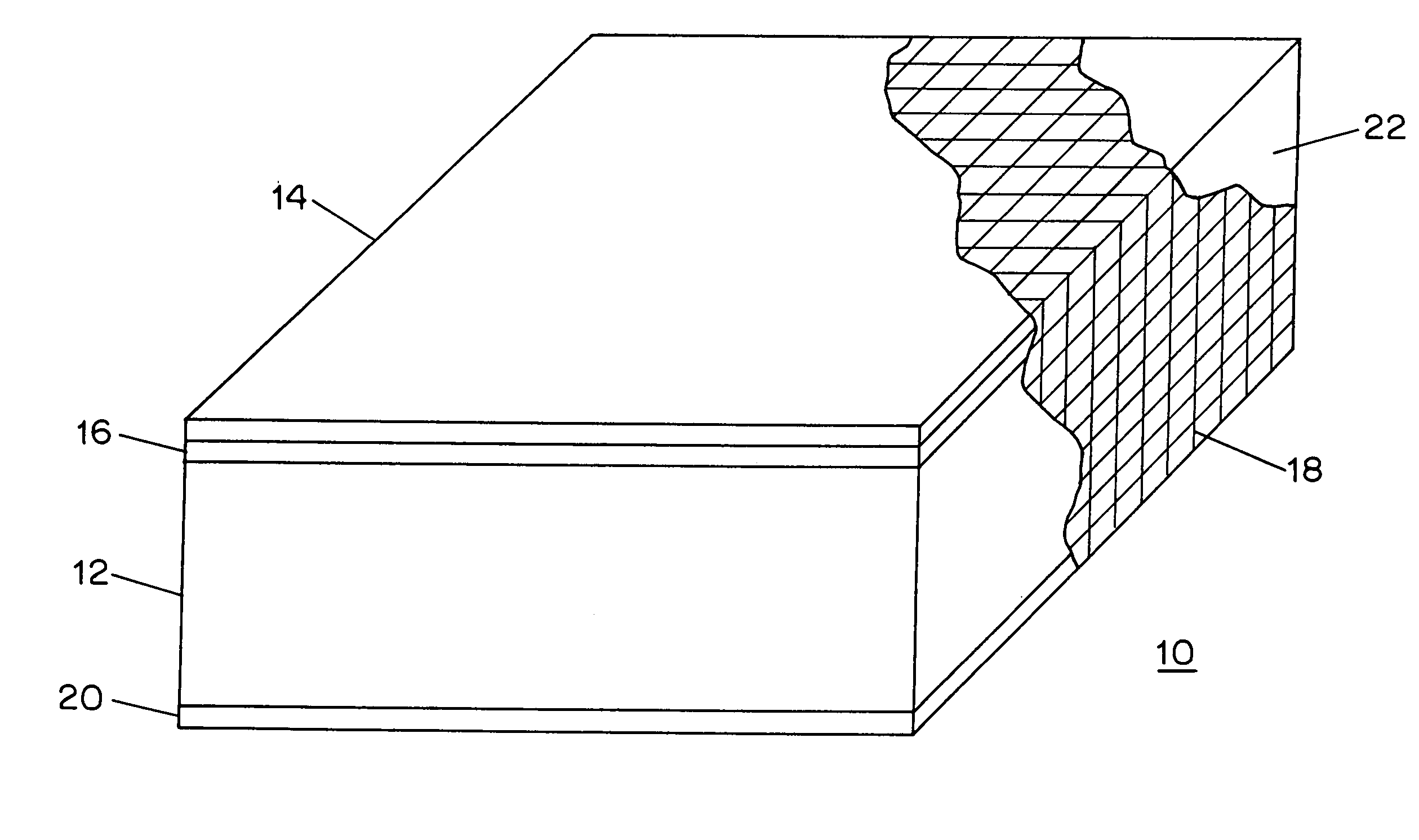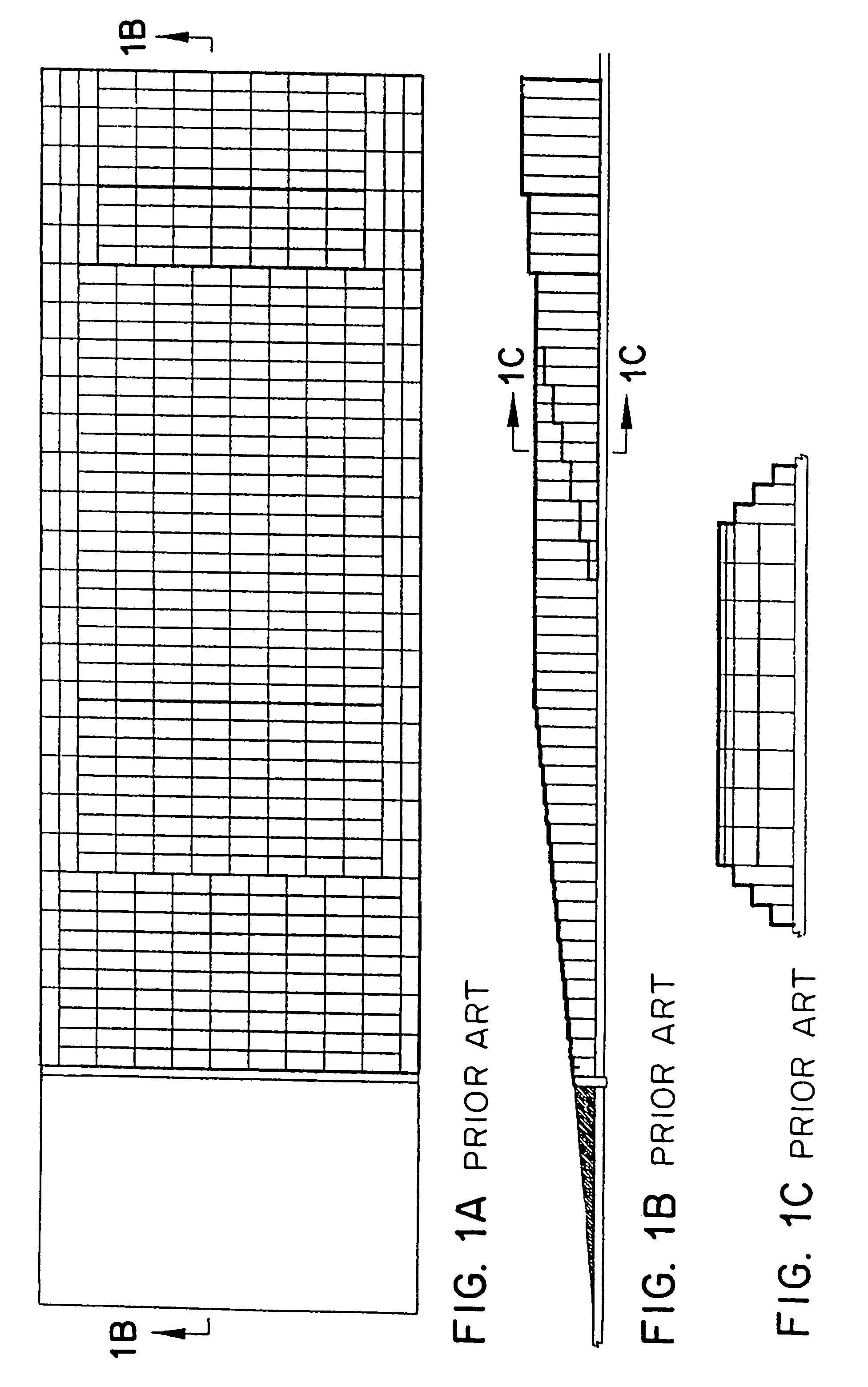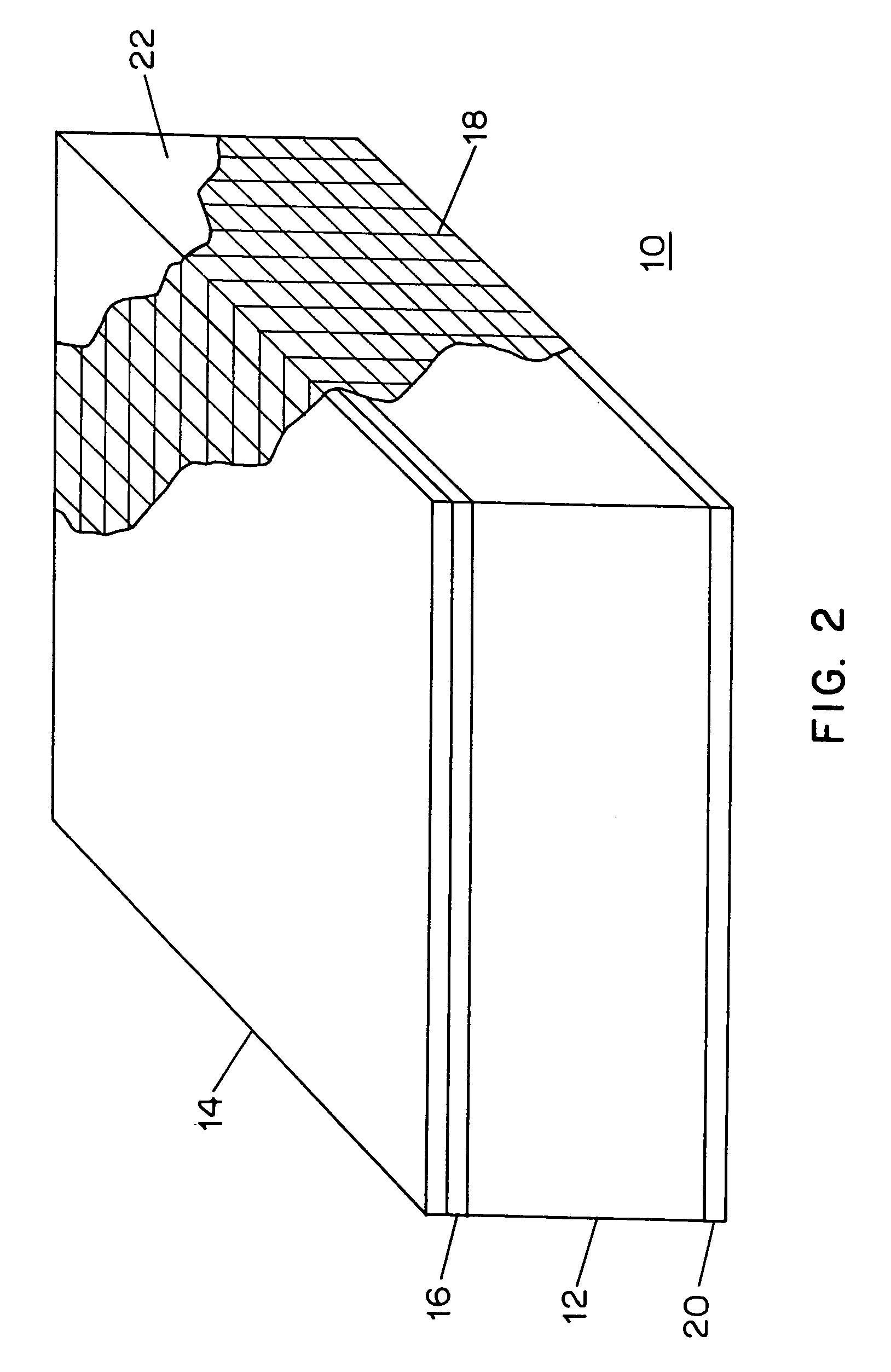Jet blast resistant vehicle arresting blocks, beds and methods
- Summary
- Abstract
- Description
- Claims
- Application Information
AI Technical Summary
Benefits of technology
Problems solved by technology
Method used
Image
Examples
Embodiment Construction
[0027]FIG. 2 illustrates an embodiment of a vehicle arresting unit 10 pursuant to the invention. The drawing is not necessarily to scale and may represent an arresting unit of dimensions four feet by four feet by six to thirty inches thick, for example.
[0028]As shown, vehicle arresting unit 10 includes a block of compressible material 12, having top, bottom and side surfaces and a top to bottom thickness. Block 12 may be cellular concrete fabricated in accordance with the '068 patent or otherwise, or may be formed of phenolic foam, ceramic foam, or other suitable material. As described in the '025 patent, for aircraft arresting applications suitable arresting material characteristics are selected to enable aircraft travel to be arrested within a desired distance, without causing passenger injury or aircraft damage such as landing gear failure. For example, cellular concrete fabricated so as to provide a compressive gradient strength ranging between 60 to 80 psi (pounds per square in...
PUM
 Login to View More
Login to View More Abstract
Description
Claims
Application Information
 Login to View More
Login to View More - R&D
- Intellectual Property
- Life Sciences
- Materials
- Tech Scout
- Unparalleled Data Quality
- Higher Quality Content
- 60% Fewer Hallucinations
Browse by: Latest US Patents, China's latest patents, Technical Efficacy Thesaurus, Application Domain, Technology Topic, Popular Technical Reports.
© 2025 PatSnap. All rights reserved.Legal|Privacy policy|Modern Slavery Act Transparency Statement|Sitemap|About US| Contact US: help@patsnap.com



